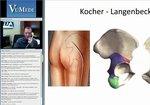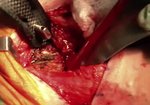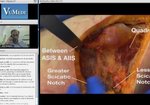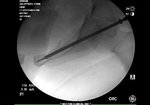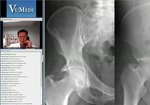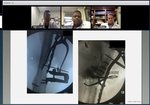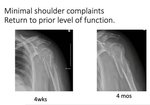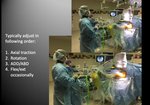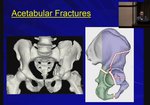
Video Player is loading.
Current Time 0:00
/
Duration 0:00
Loaded: 0%
0:00
Stream Type LIVE
1x
- 0.5x
- 0.75x
- 1x, selected
- 1.25x
- 1.5x
- 1.75x
- 2x
- Chapters
- descriptions off, selected
- captions settings, opens captions settings dialog
- captions off, selected
This is a modal window.
Beginning of dialog window. Escape will cancel and close the window.
End of dialog window.
10 seconds
Playback speed
This is a modal window. This modal can be closed by pressing the Escape key or activating the close button.
The modified Stoppa Approach in the treatment of a T-shaped Acetabular Fracture / Surgical Video Technique
7,855 views
July 28, 2020
The intrapevlic modified Stoppa approach was an important addition to the anterior exposures in acetabular ...
read more ↘ trauma surgery. It is an appealing, less invasive alternative to the ilioinguinal approach. Its main advantage is the avoidance of the middle window of the ilioinguinal approach, thus sparing dissection of the inguinal canal, femoral nerve and the external iliac vessels. On the other hand, it gives a superior and unremarkable access to the whole quadrilateral surface and the posterior column as well as the pelvic brim as far posteriorly as the sacroiliac joint. It can be combined with a small lateral iliac window to get an access to the whole iliac fossa and facilitate reduction and fixation of associated iliac wing fracture extensions.
T-shaped and transverse fractures of the acetabulum with no associated posterior wall injury are classically approached according to the area of the maximum displacement. Therefore, in fractures with the main displacement at the posterior column, it was advisable to approach the fracture through a posterior Kocher Langenbeck approach. With the use of Stoppa approach and its unremarkable access to the posterior column from the greater sciatic notch to the ischial spine, we can actually directly reduce and fix both the anterior and posterior columns, sparing the hip abductors which might facilitate the postoperative rehabilitation. Furthermore, the lateral and posterior soft tissues around the hip would be left intact which adds an advantage if a total hip replacement would be required in the future.
Our initial experience with the use of modified Stoppa approach in consecutive 34 patients (12 had T-shaped or transverse fractures) was excellent with low complication rates (one external iliac vein injury and 4 patients with infection). Anatomical reduction could be achieved in 69% of patients. This video presents our surgical technique for the treatment of a T-shaped acetabular fracture with the main displacement in the posterior column by the use of modified Stoppa approach.
↖ read less
read more ↘ trauma surgery. It is an appealing, less invasive alternative to the ilioinguinal approach. Its main advantage is the avoidance of the middle window of the ilioinguinal approach, thus sparing dissection of the inguinal canal, femoral nerve and the external iliac vessels. On the other hand, it gives a superior and unremarkable access to the whole quadrilateral surface and the posterior column as well as the pelvic brim as far posteriorly as the sacroiliac joint. It can be combined with a small lateral iliac window to get an access to the whole iliac fossa and facilitate reduction and fixation of associated iliac wing fracture extensions.
T-shaped and transverse fractures of the acetabulum with no associated posterior wall injury are classically approached according to the area of the maximum displacement. Therefore, in fractures with the main displacement at the posterior column, it was advisable to approach the fracture through a posterior Kocher Langenbeck approach. With the use of Stoppa approach and its unremarkable access to the posterior column from the greater sciatic notch to the ischial spine, we can actually directly reduce and fix both the anterior and posterior columns, sparing the hip abductors which might facilitate the postoperative rehabilitation. Furthermore, the lateral and posterior soft tissues around the hip would be left intact which adds an advantage if a total hip replacement would be required in the future.
Our initial experience with the use of modified Stoppa approach in consecutive 34 patients (12 had T-shaped or transverse fractures) was excellent with low complication rates (one external iliac vein injury and 4 patients with infection). Anatomical reduction could be achieved in 69% of patients. This video presents our surgical technique for the treatment of a T-shaped acetabular fracture with the main displacement in the posterior column by the use of modified Stoppa approach.
↖ read less
Comments 2
Login to view comments.
Click here to Login
